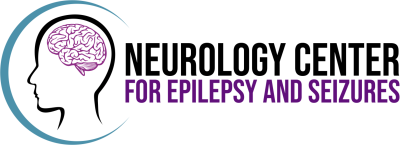Is your child struggling in school despite additional support or interventions? Academic challenges can sometimes…

CAE Childhood Absence Epilepsy
Most people associate seizures and epilepsy with uncontrolled movements. However, epilepsy can also be marked by a lack of movement. This type of epilepsy is known as absence epilepsy. Childhood Absence Epilepsy (CAE) is an epilepsy syndrome featuring absence seizures that begins in childhood.
CAE impacts 2 to 8% of people with epilepsy. It typically onsets in early childhood, between the ages of 4 and 8 years. Most of the cases are genetic, though patients with CAE may not have abnormal genetic tests for genes that we know are linked to epilepsy. However, our knowledge about genes is constantly evolving, so we may soon have genetic tests that can better identify CAE.
Some people think that absence seizures mean that the seizures are absent of symptoms. That is not true. In absence seizures, the child appearing absent is the symptom. Generally, during an absence seizure, the child is unresponsive, unaware, and stares blankly. They may blink or roll their eyes. They may also have some repetitive behaviors, such as mouth chewing.
These seizures are normally short. They last between 10 and 20 seconds. They start and end abruptly, without any warning to the patient. In fact, most children are unaware the seizure has happened and are able to resume normal activities.
However, most children with CAE have multiple seizures per day. While CAE does not generally impact normal development, it can lead to problems with attention, concentration, learning, and memory in some children. To understand this, imagine if you were unaware of your surroundings multiple times a day. It would be inevitable that you would miss information, which could make it more difficult to concentrate, leave you lost in the conversation or lesson, and make it impossible to retain the missing information.
If you think your child may have CAE, then the next step is diagnosis. We start with a physical exam to rule out other causes for the staring spells. We can use an electroencephalogram (EEG), computed tomography (CT) scan, or magnetic resonance imaging (MRI) to help identify absence seizures.
We can treat CAE with medications. The preferred first line treatments are
- Zarontine/ Ethosuximide
- Valproate/ Depakote
- Lamotrigine/ Lamictal
If those first-line treatments are unsuccessful, we may try combining medications to improve results. We may also use second-line medications including
- Topamax/ Topiramate
- Zonegran/ Zonisamide
- Keppra/ Levetiracetam
- Clobazam/ Benzodiazepines
- Stiripentol
- Symmetrel/ Amantadine
The goal is to find the treatment combination that provides the best, most consistent relief with the fewest side effects. Many patients outgrow CAE and will only require treatment for a short period of time.
Neurology Knowledge Center – CAE Childhood Absence Epilepsy



